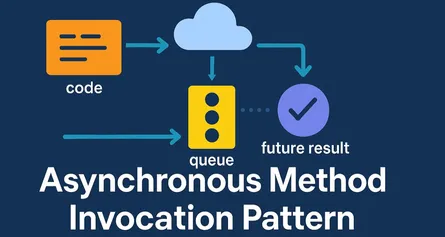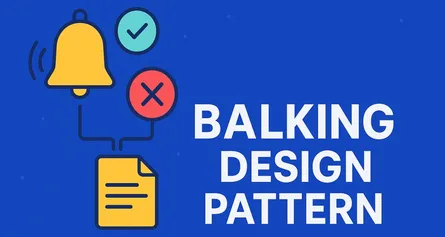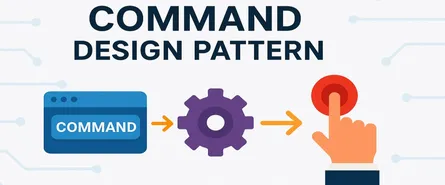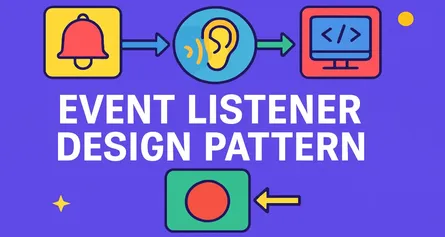
Mastering Double Dispatch in C#: A Comprehensive Guide
Introduction to the Pattern
Definition and Core Concept
In object-oriented programming, method calls are typically resolved based on the runtime type of the object on which the method is invoked—a mechanism known as single dispatch. However, there are scenarios where the behavior of a method should depend on the runtime types of two objects involved in the interaction. This is where the double dispatch pattern comes into play.
Double dispatch is a technique that allows a program to select a method to execute based on the runtime types of two objects. It involves two levels of method calls: the first dispatch determines the method to invoke based on the receiver’s type, and the second dispatch selects the method based on the argument’s type. This pattern is particularly useful in languages that do not natively support multiple dispatch, enabling more dynamic and flexible behavior in object interactions.
Historical Context and Origin
The concept of double dispatch was first articulated by Dan Ingalls in the context of the Smalltalk programming language, where it was referred to as multiple polymorphism. Smalltalk’s message-passing paradigm highlighted the need for mechanisms to handle method selection based on multiple object types. Over time, the double dispatch pattern became a foundational concept in object-oriented design, influencing the development of patterns like the Visitor pattern and informing best practices in languages like C#, Java, and C++.
Position Within Behavioral Design Patterns
Double dispatch is classified as a behavioral design pattern because it defines how objects interact and communicate with each other. It is closely associated with the Visitor pattern, which leverages double dispatch to separate algorithms from the objects on which they operate. By facilitating operations that depend on multiple object types, double dispatch enhances the flexibility and extensibility of object-oriented systems.
Core Principles
The double dispatch pattern is grounded in the following principles:
-
Polymorphism: Utilizing polymorphic behavior to determine method execution based on object types at runtime.
-
Encapsulation: Encapsulating behavior within objects, allowing them to manage their interactions with other objects.
-
Separation of Concerns: Decoupling operations from the objects they operate on, promoting modularity and maintainability.
-
Extensibility: Enabling the addition of new operations without modifying existing object structures, adhering to the Open/Closed Principle.
By adhering to these principles, double dispatch facilitates dynamic and type-safe interactions between objects, enhancing the robustness of software designs.
Key Components
Implementing the double dispatch pattern involves several key components:
-
Base Classes or Interfaces: Abstract definitions for the interacting object hierarchies, providing a common contract for derived classes.
-
Concrete Classes: Specific implementations of the base classes, representing the various object types involved in interactions.
-
Visitor or Dispatcher: An object that orchestrates the interaction between different object types, often implementing methods for each combination of interacting types.
-
Accept Method: A method in the concrete classes that accepts a visitor or dispatcher, initiating the double dispatch process.
These components work together to facilitate method selection based on the runtime types of both the receiver and the argument, enabling dynamic behavior in object interactions.
When to Use
Appropriate Scenarios
Double dispatch is particularly useful in scenarios where operations depend on the combination of two object types. Common use cases include:
-
Collision Detection in Games: Determining the outcome of interactions between different game entities, such as a player colliding with various obstacles.
-
Rendering Systems: Applying different rendering strategies based on the types of graphical objects and rendering contexts.
-
Mathematical Operations: Performing operations like addition or multiplication where the behavior depends on the types of operands.
-
Event Handling: Managing events where the response depends on both the event type and the handler type.
Business Cases
In business applications, double dispatch can be employed in:
-
Financial Systems: Calculating fees or interest rates based on combinations of account types and transaction types.
-
Workflow Management: Routing tasks based on both the task type and the role of the user handling it.
-
E-commerce Platforms: Applying discounts or promotions based on combinations of customer types and product categories.
Technical Contexts Where This Pattern Shines
Double dispatch is advantageous in technical contexts that require:
-
Dynamic Behavior: Systems where behavior must adapt based on multiple object types at runtime.
-
Extensibility: Applications that need to support the addition of new operations without altering existing object structures.
-
Type Safety: Environments where compile-time type checking is essential to ensure correct behavior.
By enabling method selection based on multiple object types, double dispatch enhances the flexibility and maintainability of complex systems.
Implementation Approaches (with Detailed C# Examples)
In C#, double dispatch can be implemented using various approaches. Below, we explore several methods, each accompanied by detailed examples.
1. Classic Double Dispatch Using the Visitor Pattern
The Visitor pattern is a common way to implement double dispatch in C#. It involves creating a visitor interface with methods for each concrete class, and having each class accept a visitor.
// Visitor interface
public interface IVisitor
{
void Visit(ElementA element);
void Visit(ElementB element);
}
// Elements
public abstract class Element
{
public abstract void Accept(IVisitor visitor);
}
public class ElementA : Element
{
public override void Accept(IVisitor visitor)
{
visitor.Visit(this);
}
}
public class ElementB : Element
{
public override void Accept(IVisitor visitor)
{
visitor.Visit(this);
}
}
// Concrete visitor
public class ConcreteVisitor : IVisitor
{
public void Visit(ElementA element)
{
Console.WriteLine("Visited ElementA");
}
public void Visit(ElementB element)
{
Console.WriteLine("Visited ElementB");
}
}In this implementation:
-
Each
Elementclass implements theAcceptmethod, which calls the appropriateVisitmethod on the visitor. -
The
ConcreteVisitorclass implements theVisitmethods for eachElementtype.
This structure allows operations to be defined externally from the elements, promoting separation of concerns and facilitating the addition of new operations.
2. Using Dynamic Typing
C#‘s dynamic keyword can be utilized to achieve double dispatch by deferring method resolution to runtime.
public class Processor
{
public void Process(dynamic item1, dynamic item2)
{
Handle(item1, item2);
}
private void Handle(ItemA item1, ItemB item2)
{
Console.WriteLine("Handling ItemA and ItemB");
}
private void Handle(ItemB item1, ItemA item2)
{
Console.WriteLine("Handling ItemB and ItemA");
}
private void Handle(object item1, object item2)
{
Console.WriteLine("Handling unknown items");
}
}In this approach:
-
The
Processmethod accepts dynamic parameters, allowing the runtime to determine the appropriateHandlemethod to invoke based on the actual types of the arguments. -
Specific
Handlemethods are defined for combinations of item types.
While this method provides flexibility, it sacrifices compile-time type checking and may introduce runtime errors if not carefully managed.
3. Using Pattern Matching (C# 8.0 and Later)
C# 8.0 introduced enhanced pattern matching capabilities, which can be leveraged to implement double dispatch.
public void Handle(object item1, object item2)
{
switch (item1, item2)
{
case (ItemA a, ItemB b):
Console.WriteLine("Handling ItemA and ItemB");
break;
case (ItemB b, ItemA a):
Console.WriteLine("Handling ItemB and ItemA");
break;
default:
Console.WriteLine("Handling unknown items");
break;
}
}In this method:
-
A tuple of the two items is used in a switch expression to match specific type combinations.
-
Each case handles a specific pair of types, enabling precise control over behavior based on the types involved.
This approach maintains type safety and clarity, making it a suitable choice for scenarios where the number of type combinations is manageable.
4. Using Reflection
Reflection can be employed to dynamically invoke methods based on the runtime types of objects.
public class Processor
{
public void Process(object item1, object item2)
{
var method = GetType().GetMethod("Handle", new[] { item1.GetType(), item2.GetType() });
if (method != null)
{
method.Invoke(this, new[] { item1, item2 });
}
else
{
Console.WriteLine("No suitable method found");
}
}
public void Handle(ItemA item1, ItemB item2)
{
Console.WriteLine("Handling ItemA and ItemB");
}
public void Handle(ItemB item1, ItemA item2)
{
Console.WriteLine("Handling ItemB and ItemA");
}
}In this implementation:
-
The
Processmethod uses reflection to find and invoke the appropriateHandlemethod based on the runtime types of the arguments. -
Specific
Handlemethods are defined for each combination of item types.
While reflection offers flexibility, it incurs performance overhead and lacks compile-time type checking, making it less desirable for performance-critical applications.
Different Ways to Implement Double Dispatch (with Modern C# Features)
C# has evolved significantly, and newer features in .NET 6, 7, and beyond allow us to write more expressive and maintainable code. Let’s explore a few modern ways to implement double dispatch effectively, using features such as pattern matching, switch expressions, records, and even source generators in niche cases.
1. Double Dispatch Using switch Expressions
Introduced in C# 8, switch expressions improve readability and reduce boilerplate, especially when handling multiple type combinations.
public abstract record Shape;
public record Circle : Shape;
public record Rectangle : Shape;
public static class ShapeCollisionHandler
{
public static string Collide(Shape a, Shape b) =>
(a, b) switch
{
(Circle, Circle) => "Two circles bounced.",
(Circle, Rectangle) => "Circle hit a rectangle.",
(Rectangle, Circle) => "Rectangle hit a circle.",
(Rectangle, Rectangle) => "Two rectangles collided.",
_ => "Unknown shapes."
};
}This style is concise, declarative, and highly readable. It also lends itself well to unit testing and refactoring.
2. Using Interface Contracts and Generics
Sometimes, you want to enforce contracts between types, especially when extending logic in plug-in scenarios. Here’s a generic approach.
public interface IInteractable
{
void InteractWith(IInteractable other);
void InteractWithCircle(Circle circle);
void InteractWithRectangle(Rectangle rectangle);
}
public class Circle : IInteractable
{
public void InteractWith(IInteractable other) => other.InteractWithCircle(this);
public void InteractWithCircle(Circle circle) => Console.WriteLine("Circle meets circle.");
public void InteractWithRectangle(Rectangle rectangle) => Console.WriteLine("Circle hits rectangle.");
}
public class Rectangle : IInteractable
{
public void InteractWith(IInteractable other) => other.InteractWithRectangle(this);
public void InteractWithCircle(Circle circle) => Console.WriteLine("Rectangle meets circle.");
public void InteractWithRectangle(Rectangle rectangle) => Console.WriteLine("Rectangle meets rectangle.");
}This contract-based structure avoids dynamic typing while giving full control to implementers.
3. Using Records and Pattern-Matching-Friendly Hierarchies
Using records and a functional style with expressions enables safe extensibility.
public abstract record Shape;
public record Triangle : Shape;
public record Hexagon : Shape;
public static class GeometryEngine
{
public static string Analyze(Shape a, Shape b) => (a, b) switch
{
(Triangle, Triangle) => "Two triangles clash.",
(Hexagon, Triangle) => "Hexagon absorbs triangle.",
_ => "Unhandled case."
};
}This approach simplifies the code surface and fits well with functional programming techniques.
Real World Use Cases
Understanding abstract patterns is one thing. Seeing where they naturally emerge in the real world is something else. Here are several domains where double dispatch plays a clear role.
1. Collision Systems in Games
In game engines, different objects interact based on their types: bullets hit enemies, players collect coins, enemies bounce off walls.
// Simplified interaction in a physics system
public interface IGameEntity
{
void Interact(IGameEntity entity);
void InteractWithPlayer(Player player);
void InteractWithEnemy(Enemy enemy);
}
public class Player : IGameEntity
{
public void Interact(IGameEntity entity) => entity.InteractWithPlayer(this);
public void InteractWithPlayer(Player player) => Console.WriteLine("Two players team up.");
public void InteractWithEnemy(Enemy enemy) => Console.WriteLine("Player takes damage.");
}2. Expression Evaluation in Compilers
Languages like C# and F# use Abstract Syntax Trees (ASTs). Double dispatch is used to evaluate or transform trees with different node types (e.g., BinaryExpression, Literal, UnaryExpression).
3. Document Formatters and Exporters
You might have different document types (e.g., PDF, HTML) and different content types (e.g., paragraphs, tables). Double dispatch helps apply the correct formatting logic based on both.
Common Anti-Patterns and Pitfalls
Even good patterns can lead to headaches if misused. Let’s look at common missteps.
1. Overcomplicating Simple Logic
If you only have a handful of interactions and no extensibility needs, double dispatch can be overkill. Prefer simple if-else or switch logic in those cases.
2. Tight Coupling Between Types
When two classes know too much about each other’s internals or concrete types, your design becomes rigid. Use interfaces to reduce this coupling.
3. Ignoring the Open/Closed Principle
If you find yourself editing multiple existing classes whenever you add a new one, you may be missing an abstraction layer. The pattern should enable adding functionality without modifying existing classes.
4. Excessive Use of dynamic
Relying too much on dynamic may make your code brittle. It bypasses compile-time safety, which increases the likelihood of runtime errors.
Advantages and Benefits
Let’s consider what you gain from implementing double dispatch correctly.
- Precise Behavior Control: Allows you to write clean, distinct logic for each pair of object types.
- High Extensibility: New types or behaviors can be added without disrupting existing code.
- Improved Separation of Concerns: You can move logic out of your core entities and into visitors or handlers.
- Better Modeling of Real-World Interactions: Especially in domains like simulations or rules engines.
These benefits align well with SOLID principles, particularly the Open/Closed and Single Responsibility Principles.
Disadvantages and Limitations
No pattern is perfect. Double dispatch comes with trade-offs.
- Verbosity: Especially in visitor implementations, you may end up writing a lot of boilerplate.
- Scalability Concerns: As the number of types grows, the number of interaction methods grows quadratically.
- Limited Native Support: Languages like C# don’t natively support multiple dispatch, so implementations require some boilerplate or tricks.
- Cognitive Overhead: New developers may find the flow hard to follow, especially when it involves indirect method calls across multiple types.
These limitations mean double dispatch should be used deliberately, with a clear understanding of the domain complexity.
Testing Pattern Implementations
When working with double dispatch, test coverage becomes more critical than ever. Each combination of types should be verified.
1. Use Parameterized Tests
If you’re using xUnit, write data-driven tests to cover all meaningful type pairs.
[Theory]
[InlineData(typeof(Circle), typeof(Rectangle), "Circle hits rectangle")]
[InlineData(typeof(Rectangle), typeof(Rectangle), "Two rectangles collide")]
public void Test_Collisions(Type typeA, Type typeB, string expected)
{
var shapeA = (Shape)Activator.CreateInstance(typeA);
var shapeB = (Shape)Activator.CreateInstance(typeB);
var result = ShapeCollisionHandler.Collide(shapeA, shapeB);
Assert.Equal(expected, result);
}2. Mock Interactions with Interfaces
If your double dispatch involves services or domain logic, mock the secondary participants and assert which methods get called.
3. Test Edge Cases
Always test with unknown or null types to ensure fallbacks are safe and logical.
Conclusion and Best Practices
Double dispatch is not just a technical trick—it’s a design tool. When you have operations that depend on the types of two interacting objects, this pattern gives you clarity, flexibility, and control.
When to Reach for It
- You need dynamic behavior based on combinations of types.
- Your system involves rich interactions: game mechanics, document formatting, rules processing.
- You want to keep logic extensible and decoupled from data structures.
Best Practices
- Start simple. Only reach for double dispatch if the interactions actually demand it.
- Use interfaces to decouple participants.
- Prefer pattern matching when it improves readability and safety.
- Minimize boilerplate using modern C# features like records and
switchexpressions. - Document the pattern in your codebase. A small note can save hours of onboarding time for new developers.
- Test combinations rigorously to avoid gaps in logic.
Ultimately, double dispatch is like a well-tuned orchestra. Each type knows its part, and together, they create a cohesive, responsive system. Use it wisely, and your architecture will be more adaptable, expressive, and future-proof.
Share this article
Help others discover this content
About Sudhir mangla
Content creator and writer passionate about sharing knowledge and insights.
View all articles by Sudhir mangla →




